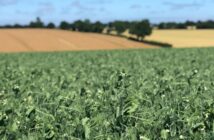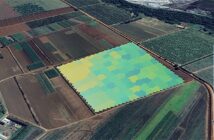As spring drilling gets underway in some areas, a survey of more than 100 growers by Limagrain UK provides a unique insight into spring barley agronomy.
All the UK’s main barley-growing areas were represented in the survey, which found that while farm practices are generally in-line with recommended approaches, there are some potential areas for improvement.
Limagrain UK’s arable technical manager, Ron Granger examines three key areas.
Seed rates
Generally, seed rates appear about right, with half (49%) of growers sowing spring barley at 300-350 seeds/m2, and most (76%) targeting an 8 t/ha yield.
“Our trials work shows that for mid-March sowing in good weather and soil conditions, 350 seeds/m2 is optimal for modern, high-yielding varieties. An 8-9 t/ha crop needs around 800 ears/m2, which at a 350 seeds/m2 rate, equates to 2.5-3 tillers per plant at harvest,” Mr Granger says.
But seed rates must be adjusted to drilling date, weather and seedbed conditions, he continues.
“For example, if you’re sowing early on light land in perfect, warm seedbeds, then establishment and tillering capacity is greater and rates could be reduced to nearer 300 seeds/m2. Equally, if it’s late March, or soils are cold and/or cloddy, then go to nearer 375-400 seeds/m2, and for anything sown into April, or in a black-grass situation, consider 400-450 seeds/m2.”
Late-sown crops inevitably produce fewer tillers and therefore fewer ears, which must be compensated for by increasing seed rate, he explains.
“Modern varieties, such as LG Diablo or newcomer Jensen, offer excellent spring vigour and high tillering capacity,” he adds.
“The biggest issue is often the weather. Drought will cause tiller loss, so ensure numbers are high enough at the outset by driving establishment and early rooting with front-loaded nutrition.”
Optimising nitrogen
The survey shows 52% of growers usually apply 100-120 kg N/ha, and one third apply 120-150 kg N/ha to spring barley. But significantly, 45% plan to reduce nitrogen use this season.
This is not surprising given higher prices, however Mr Granger believes cutting fertiliser is a false economy if plant health, tiller retention and yield are compromised.
Limagrain research in Scottish and English barley trials shows that applying an extra 30 kg N/ha at late tillering before stem elongation, after an initial seedbed application of 120 kg N/ha, regularly returns a 0.4-0.5 t/ha yield benefit over a single seedbed dose, with negligible impact on grain nitrogen.
“With feed barley prices of £220/t, that could be worth £110, or more if there’s a malting premium, which far outweighs the £60-65 (N price of £2/kg) cost of the extra nitrogen. Why reduce rates if it compromises yield and, more importantly, the return on investment?”
Effort is better focused on timing applications to optimise uptake efficiency, he adds. “Some growers get good results from a ‘little and often’ approach, but whatever route you take, good plant health combined with soil moisture is essential for crops to efficiently take up nitrogen.
“Foliar trace element mixtures at times of plant stress can be beneficial when nitrogen uptake from soil is a limiting factor.”
Disease control
Most growers (70%) apply two fungicides, which is preferred in “normal” seasons, Mr Granger says. Typically, the first application is between GS 25-31, with the second targeted between GS 39-55.
“We all know how quickly spring barley moves, so close monitoring of growing crops is essential.
“Spring barley doesn’t have a main yield-building flag leaf, so all leaves, especially leaves two and three, must be kept clean and green as long as possible.”
Very dry conditions with no disease, may offer potential for cost savings, however he suggests this is best achieved by adjusting product selection and rate, rather than omitting sprays.
“If you’re only spraying once, it’s difficult to judge the best time to apply it, and you’re second-guessing the weather. Remain flexible and react to the season.”
Mr Granger also notes 70% of growers surveyed do not generally use an insecticide. “BYDV can be a problem in some areas, especially if there’s high activity of virus-transmitting aphids after a mild winter, so it’s something to monitor and treat if necessary.”




